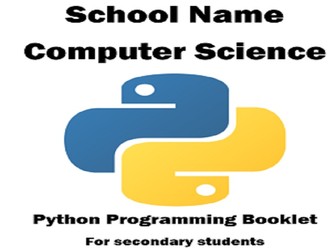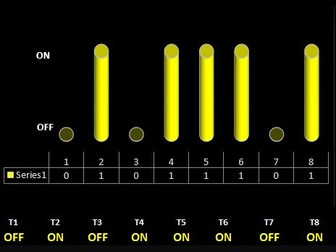
Python Programming Booklet for Secondary Students and Teachers
Python Programming Booklet for secondary students and teachers is prepared by a secondary computer science teacher. All the contents of these booklet reflects the specifications of past and future computer science syllabus. This booklet mainly focuses on the programming skills needed to pass secondary computer science assessments. It contains essential programming techniques which help students to be independent programmers. The booklet contains easy programming concepts such as variables and datatypes, data structures such as list, tuple and dictionary and advanced concepts such classes and modules. Students are able to learn programming in their own pace as they progress from basic to advanced level. This booklet is prepared in the form of worksheets and assessment milestones so that students are able to back track if they want to use some techniques from previous lessons. It also has low and high level problems with step by step guidance how the problems would be tackled.

